Friday, 20th May 2022
Ethanol blending target advanced
In News
The Central government has advanced its 20% ethanol blending target by five years for 2025-26 instead of 2030.
About the News
- The Union Cabinet advanced its target for achieving 20% ethanol blending in petrol through the amended National Biofuel Policy-2018. The new target is 2025-26 instead of 2030.
- Additionally, the amendment allows more feedstock for production of biofuels and export of biofuels in specific cases.
The National Biofuel Policy, 2018:
- The “National Policy on Biofuels - 2018” was notified by Ministry of Petroleum and Natural Gas superseding the National Policy on Biofuels, 2009.
- The objective of the policy is to promote biofuels in the country and reducing dependence on imports by encouraging fuel blending.
- With bioethanol, biodiesel and bioCNG in focus, its key parts include Ethanol Blending Programme (EPB), production of second-generation ethanol (derived from forest and agricultural residues), increasing capacity for production of fuel additives, R&D in feedstock, which is the starting material for ethanol production, and financial incentives for achieving these goals.
The new amendments
- to allow more feedstocks for production of biofuels,
- to advance the ethanol blending target of 20% blending of ethanol in petrol to ESY 2025-26 from 2030,
- to promote the production of biofuels in the country, under the Make in India program, by units located in Special Economic Zones (SEZ)/ Export Oriented Units (EoUs),
- to add new members to the National Biofuel Coordination Committee (NBCC).
- to grant permission for export of biofuels in specific cases.
Purpose of the advancement of target
Oil Marketing Companies (OMCs) have already been mandated to buy ethanol from sugar mills and clear payments within 21 days. With the rising crude oil prices, such amendments will help:
- to reduce the crude oil import bill and
- to allow consumers access to environment friendly fuel.
- to help sugar mills diversify their portfolios faster from just sugar production and become self-reliant in paying cane-growers.
Probable challenges:
- In order to achieve 20% blending, India would require a consistent supply of 1,500 crores litres of ethanol annually.
- Niti Aayog has talked about managing 760 crore liters from sugar and 740 crore litres from grains to meet this ethanol requirement.
- Once 20 per cent blending is achieved, 6 mn tonnes of sugar would have to be diverted annually to produce the fuel additive.
- India's 2021-22 sugar production is set to rise 2.90 % to 31.9 mn tons and domestic demand is estimated to be at 27 million tonnes in the 2021-22 marketing year.
- India being a major sugar exporter, meeting the ethanol target will be challenging.
Sources:
NATO expansion amid Russian invasions
In News
Finland and Sweden have formally submitted applications for NATO membership.
About the News
- NATO is the US-led security alliance forged during the Cold War to defend its members from Soviet expansion.
- For now, Russia has officially confirmed no problems with Finland and Sweden possibly becoming 31st and 32nd members of the NATO.
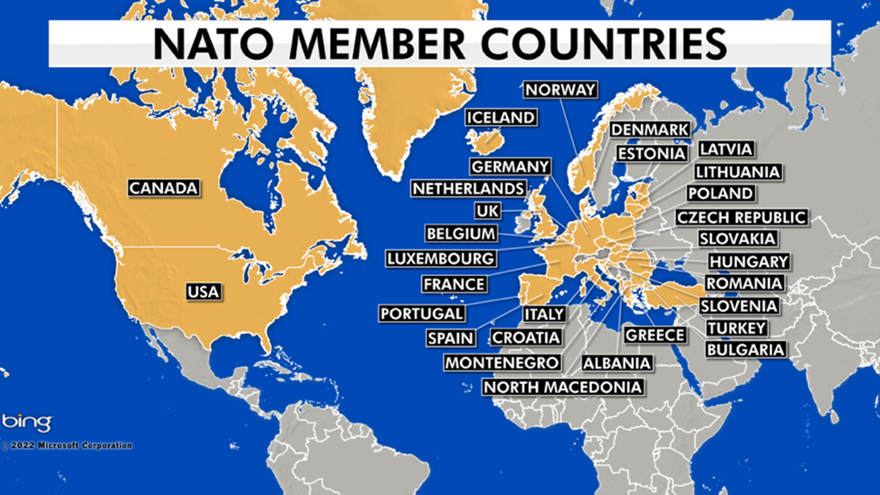
- Previously, Sweden and Finland had said that they would not allow NATO bases or nuclear weapons on its territory if admitted to the alliance.
- However, their membership has been objected by Turkey on the ground that the two countries had provided safe haven to the leaders of the Kurdish group PKK, an armed movement fighting for a separate Kurdistan, comprising Kurdish areas in Turkey, Iraq, Iran and Syria.

How will the membership impact global geopolitics?
- New security equation: The admission of Finland and Sweden to NATO would bring about a transformation in the continent’s security map by giving NATO a contiguous long frontier in western Russia —Finland and Russia share a 1,300-km border — and doubling it from the present 1,200 km, parts of it in northern Norway, Latvia and Estonia, and Poland and Lithuania.
- Strategic advantage: With Baltic Sea being Russia’s gateway to the North Sea and the Atlantic Ocean, Sweden’s island of Gotland in the middle of the Baltic Sea would give NATO a strategic advantage.
- Countering Russia: When Sweden and Finland join NATO, the— would be ringed entirely by members of the western security alliance – Finland, Estonia, Latvia, Lithuania, Poland, Germany, Denmark and Sweden.
Sources:
The Sela Tunnel
In News
The final blast for the Sela tunnel (Tunnel 1) was recently conducted through a virtual ceremony by Border Roads Organisation.
The Sela Tunnel project
- It is a strategically-significant tunnel project in West Kameng district of Arunachal Pradesh, bordering China.
- It is a ₹700-crore project announced by the government in 2018, had its foundation laid in 2019 and is expected to be completed by June 2022.
- The Sela tunnel is a part of the Balipara-Charduar-Tawang road, one of the key strategic projects near the Chinese border.
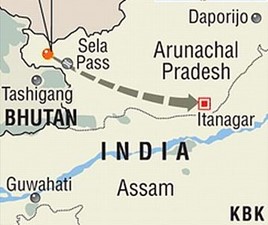
- It will be the longest twin-lane tunnel above 13,000 feet in the world, and will cut down travel time to Tawang by at least one hour.
- Its objective is to provide all weather connectivity to Tawang and allow faster deployment of weapons and soldiers to forward areas in the Tawang sector (around 4,000 army and civilian vehicles are expected to use the tunnel daily).
- This will ease the problem of winter connectivity to Tawang over the 14,000-foot Sela pass that posed a logistics challenge for the army for decades, with the movement of forces, weapons and stores severely affected for at least three months.
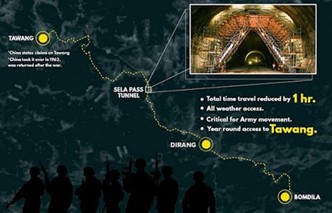
- The project consists of Tunnel 1 and Tunnel 2, a 1,555-metre twin tube tunnel.
- Tunnel 2 has one bi-lane tube for traffic and one escape tube for emergencies.
- Only tunnels longer than 1,500 metres have to have an escape passage alongside.
- The project also includes the construction of two roads, measuring 7kmand 1.3km.
- It is constructed using the latest Austrian tunnelling techniques that involves observing and studying the rock, and designing tunnel support according to rock behaviour.
- Its dimensions will support the movement of all types of army vehicles and military hardware including the Bofors guns that have to be towed to forward areas by Scania trucks.
Source:
- Explained: The Sela Tunnel – importance and the strategic edge it promises
- Here’s All About Sela Tunnel, World’s Longest Bi-Lane Road Tunnel Above 13,000 Ft
Image source:
World Metrology Day
On May 20 1875, the Metre Convention was signed by representatives of seventeen nations. World Metrology Day is an annual celebration of this signature. The Convention set the framework for global collaboration in the science of measurement and in its industrial, commercial and societal applications.
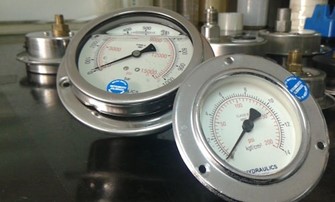
The original aim of the Metre Convention - the world-wide uniformity of measurement - remains as important today as it was in 1875. The theme for World Metrology Day 2022 is Metrology in the Digital Era. The World Metrology Day, observed on May 20 every year, is celebrated to highlight the need for accurate measurement units and contribution of metrologists, organisations and institutes in the scientific study of metrology. Metrology is the scientific study of measurement which is necessary to avoid inaccurate conclusions.
Sources:
Jute industry in India
In News
A Member of Parliament recently raised concerns w.r.t. the deteriorating condition of Bengal’s jute industry.
About Jute and Jute Industry in India
- Jute producing regions in India: The major jute producing states are West Bengal, Bihar, Odisha, Assam, Andhra Pradesh, Meghalaya and Tripura and over 99% of India’s total production is held by West Bengal, Bihar and Assam.
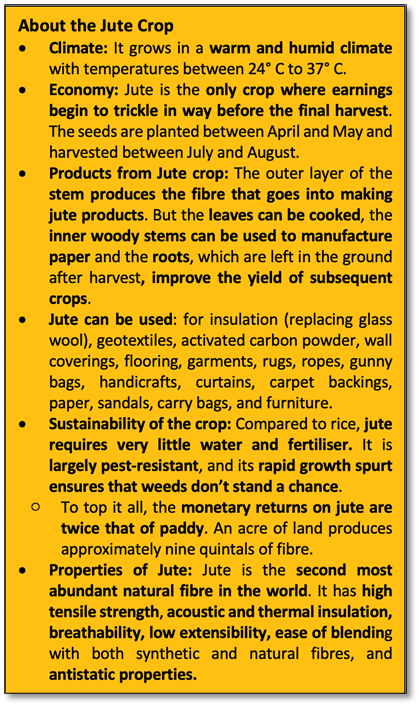
-
- There are about 70 jute mills in the country, of which about 60 are in West Bengal along both the banks of river Hooghly.
- Global status: India is the largest producer of Jute followed by Bangladesh and China. It is also known as the Golden fibre and is one of the most significant industries after cotton in India.
- However, Bangladesh tops the list in terms of acreage and trade as it accounts for three-fourths of the global jute exports.
- Employability: Jute production is a labour intensive industry. It employs about two lakh workers in the West Bengal alone and 4 lakh workers across the country.
Development and History of Jute Industry in India
- The jute industry in India is 150 years old. During the 17th century the French and Dutch imported jute from Bengal. Eventually, Calcutta became the Hub of Jute Industry under the British.
- Thus, the first jute mill was established at Rishra, on the River Hooghly near Calcutta in 1855. By the year 1910, Calcutta Mills had become the world’s largest jute producer.
- However, With the partition of Bengal into West Bengal and East Pakistan (today’s Bangladesh), the Indian Jute industry was severely hit as over 75% of the jute-growing land went to East Pakistan.
What are the Issues Concerning the Jute Industry in India?
- Procurement Issues: The mills are procuring raw jute at prices higher than what they are selling them at after processing. Mills do not acquire their raw material directly from the farmers, because:
- The farmers are far-off from the mills locations and the procurement process is cumbersome.
- Mills would have to go to multiple farmers to acquire the requisite quantity as no single farmer produces enough to fulfil the requirements of the entire mill.
- Climatic Issues: Frequent occurrence of Cyclones in the Bay of Bengal region, subsequent rains in major jute producing States; leading to lower acreage and lower quality of Jute fibre as water-logging in large fields resulted in farmers harvesting the crop prematurely.
- High cost of production: Equipment for production are all worn out, outmoded in design. Many mills are uneconomic. Products are made costlier.
- Shortage of Power Supply: Load-shedding creates problem of under-utilization of capacity.
- Growth of Jute mills in Bangladesh and loss of foreign market: Newly started jute industry in Bangladesh has captured some of the market of Indian jute goods.
- Emergence of substitute goods against gunny bags and loss of demand for jute goods both at home and abroad. Indian jute goods have been losing ground in the world market primarily due to keen competition from synthetic substitutes and also supplies from Bangladesh and China.
- Lack of modernization: The current machinery used in most of the mills in India is obsolete technology leading to reduced productivity and product quality. This has impacted the overall competitiveness of the industry in the export market
- Low yield per Acre: India produces very low quantity of jute per unit of land. In fact, among the producing countries, Indian production is, perhaps, one of the lowest.
- In Bangladesh the average yield per hectare is 1.62 tonnes. It is only 1.3 tonnes per hectare in India.
- Warehousing and storage of raw jute: Lack of storage facility leads to uneven supply of raw material, which causes erratic price fluctuations and this discourages jute farmers.
Measures to Incentivise the Jute Sector in India
- Jute Packaging Materials (Compulsory use in packing commodities) Act, 1987: This was enacted to provide for the compulsory use of jute packaging material in the supply and distribution of certain commodities in the interests of production of raw jute and jute packaging Material
- Jute Technology Mission: This has been a major component of the National Jute Policy and is the vehicle for implementation of multifarious programmes in the jute sector
- Project Jute-ICARE (Jute: Improved Cultivation and Advanced Retting Exercise): This has been launched to support the small and marginal jute growers with adequate pre and post harvesting operations in select blocks, where jute cultivation is popular.
- Minimum support price for Jute: Whenever the market price of raw jute falls below a certain level, the Jute Corporation of India (JCI) procures raw jute at Minimum Support Price (MSP), fixed on the basis of recommendation of the commission for Agricultural Cost and Prices (CACP), from jute growers to safeguard their interest.
- Incentive Scheme for Acquisition of Plants and Machinery (ISAPM): The basic aim of this scheme is to facilitate modernization in existing and new jute mills and up- gradation of technology in existing jute mills and to provide assistance to a large number of entrepreneurs to manufacture value added biodegradable Jute Diversified Products (JDP) as well as for modernization Jute up-gradation of technology.
- Anti-Dumping Duty on jute: In 2017 Government imposed Definitive Anti-Dumping Duty on jute goods originating from Bangladesh and Nepal.
- Technology Upgradation Fund Scheme (ATUFS): It is a credit linked Scheme for technology upgradation of the textile industry with one time capital subsidy for eligible machinery.
- Segments which have higher employment and export potential such as Garmenting and Technical Textiles are eligible for capital subsidy at the rate of 15% subject to cap of Rs.30 crore.
- Promotion of Jute Geo-textiles: Railway Board has been requested to consider using jute geo-textile on larger scale for the stabilization of slopes and other uses in the railway construction.
- All State Governments has been requested to promote use of jute as geo-textiles in Pradhan Mantri Gram Sadak Yojana (PMGSY) roads, district roads and State Highways, in river embankments and in slop stabilization.
Way Forward
Various Initiatives can be taken to address the concerns related to Jute Industry like:
- Improving Production: The productivity and quality of the raw jute crop by introducing a high yielding variety of jute crop. Scientific methods of jute cultivation, harvesting, retting have to be introduced in a mission mode.
- Promoting Jute for Sustainable Development: Focus has once again been brought in favour of jute bags due to their eco-friendly and renewable nature.
- Modernizing Jute Industry: The jute industry needs to be modernized by installing most modern and efficient machinery in place of obsolete machinery so as to improve the efficiency, productivity, and quality of its products.
- This will enhance their quality and cost competitiveness in the domestic as well as world market very effectively
- Diversification of use to increase demand: Use of jute in construction bunds, river embankments and for landslide protection, along with increasing use in Apparel Manufacturing in place of cotton, could help increase demand for Jute Industry in India.
Question: What are the major concerns related to jute industry in India? Discuss the measures taken by government to promote jute in India.
Source:
- The recent woes of the jute industry in West Bengal
- Explained: Why Jute Industry Of West Bengal Is Facing A Major Crisis
- The recent woes of the jute industry in West Bengal
- Problems of the Jute Industry in India
- PROBLEMS FACED BY THE JUTE INDUSTRY IN INDIA
- INDIAN JUTE INDUSTRY AND ITS FUTURE
- Watch | India's 150-year-old jute industry:
Solar hedgehog
This is image of the Sun, which is Solar Orbiter mission’s first close pass of the sun in March, 2022. The spacecraft came within one-third the distance from the sun to the Earth.

Solar Orbiter’s heat shield reached about 932 degrees Fahrenheit (500 degrees Celsius). Solar Orbiter comes equipped with a multilayer heat shield, a special coating called “Solar Black” made using burnt bone and sliding doors that protect its instruments. The mission, a joint effort between NASA and the European Space Agency, captured views of powerful flares and coronal mass ejections and perspectives of the unexplored solar poles. The orbiter even spied a new feature nicknamed the “hedgehog.”
Source:
Macolin Convention
- Context: The 12th meeting of Interpol’s Match-Fixing Task Force (IMFTF), has recently concluded with a call for harmonised global efforts to curb competition manipulation.
- The Council of Europe Convention on the Manipulation of Sports Competitions, known as the Macolin Convention, is a multi-lateral treaty aimed at checking match-fixing.
- It is a legal instrument and the only rule of international law on the manipulation of sports competitions.

- It came into force on September 1, 2019, and has been signed by 32 countries and ratified by seven (Greece, Italy, Norway, Portugal, the Republic of Moldova, Switzerland and Ukraine).
- The purpose of this Convention is to combat the manipulation of sports competitions in order to protect the integrity of sport and sports ethics in accordance with the principle of the autonomy of sport.
Source:
- The Convention on the Manipulation of Sports Competitions (the Macolin Convention)
- Calls for global efforts to curb match-fixing
Image source:
Amritsar-Jamnagar-Greenfield-corridor
- Context: TheAmritsar-Jamnagar Greenfield corridor is targeted to be completed by September 2023.
- Theflagship 1,224km long Amritsar – Bhatinda – Jamnagar Corridor will connect the economic towns of Amritsar, Bhatinda, Sangaria, Bikaner, Sanchore, Samakhiyali and Jamnagar across the four states of Punjab, Haryana, Rajasthan, and Gujarat.

- The corridor will connect thenorthern industrial and agricultural centres of the country, with key ports of Western India like Jamnagar and Kandla.
- Further,it will help boost the industrial revolution connecting the industrial belt of Baddi, Bhatinda, and Ludhiana through spurs and the state of Jammu and Kashmir through the Delhi – Amritsar – Katra Expressway.
- It is expected tosignificantly reduce the transit time and logistics cost to fuel and will help to stand tall in the competitive global export marketplace.
Source:
Image source:
"Suposhit Maa Abhiyan"
- Context: The second phase of "Suposhit Maa Abhiyan" has been recently launched in Kota, Rajasthan.
- It is a nutritional support program for pregnant mothers and girls that will not only look after pregnant women, but also newborn babies.
- It was launched in 2020 to protect the health of our future generation through a nation-wide campaign, in Kota, Rajasthan.
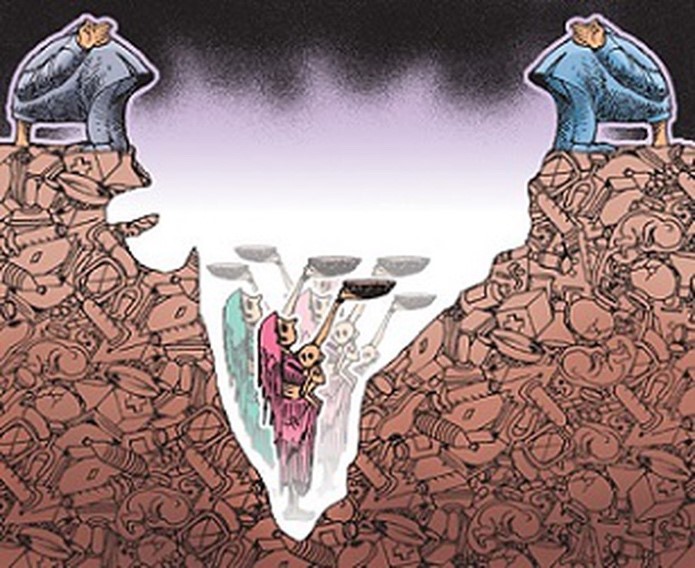
- Under the scheme:
- Women will be given food.
- At the same time, the health of the child, including medical examination, blood, medicine, delivery, will be taken care of.
- Only one pregnant woman from a family will be covered by the scheme.
- The scheme is in line with achieving ‘Malnutrition-free India’ by 2022.
Source:
Image source:
What the two-front war in Ukraine means for the world: Indian Express
Essence: Protected struggle between Russia and Ukraine is showing no sign of ebbing. It is becoming difficult to project what direction it will take and its outcome. While physical war is being waged on the Ukrainian land, a second and wider front is open where the whole world is reeling under economic slowdown and high inflation. Continued war along with covid induced lockdown in China and intensification of America First policies means that the world is without credible mechanisms of global economic coordination
Even when the war ends, more prolonged suffering will have to be endured by the people of Ukraine. On the geopolitical front, Europe and USA failed to isolate Russia, thanks to lack of support from India and China. This also raises questions on wests’ ability to enforce its say in global affairs and efficacy of sanctions as a tool in global politics.
Lack of warmongering among both political class and more significantly among the general public of Europe has been a only sign of relief. While experts continue to hope that something constructive will emerge out of this destruction, though what exactly is anybody’s guess.
Why should you read this article?
- To understand takeaways from continued Russia-Ukraine conflict.
Three development models that can guide Indian state economies: LiveMint
Essence: The editorial provides an insight into the various development strategies by Indian states by dividing Indian states in 3 categories. They are based on share of workforce in industry and agriculture in GSDP, per capita income, longevity, share of govt spending as a share of GDP and proportion of central transfers.
The first kind of model is that of Bihar- having high share of participation through agriculture dependence. Though it might seem that the growth rate of state gdp is around the national average, it seems good only because of the low base effect. These kind of states (UP, Jharkhand, NE states, etc.) have low industrialization, less private participation and are heavily dependent on central transfers for targeted programs. The social indicators are low.
The second kind of state model is Gujarat model, which indicates of high economic performances, including infrastructure and industry development. However, they are a laggard on educational and health aspects. Extra spending by the small state government get into building industry resources. Haryana, Telangana possibly follow this model.
The third model is that of Tamil Nadu- high on industrial development and high on social indicators as well. The proportion of work force in agriculture is less and states following this model could be Delhi, Maharashtra, Kerala as well.
The states following first model need state/govt funding to steer it towards the third model. Until then, the present model and migration of work force would sustain the economic growth of all regions.
Why should you read this article?
- To understand the various kinds of development models of Indian states- weakness and strength both.
Source:
Pockets of hope linking nature and humanity: The Hindu
Essence: The editorial talks about the issues related to biodiversity and highlights the course of action to improve the dwindling biodiversity in South Asia. The main drivers of biodiversity loss are climate change, invasive species, over-exploitation of natural resources, pollution and urbanization. Due to human excesses, the ecological carrying capacity of Earth has exceeded its limits. Ecosystem services have deteriorated with time.
Environmental, cultural or religious perspective taken into account, it is an imperative to act on improving biodiversity- starting with biosphere reserve conservation areas, which represent places where humans could live in harmony with nature. India has 12 such biosphere reserves but needs more because the subcontinent is a diverse set of ecosystems- alpine, coastal, coral and terrestrial ones. All these sites must utilize science-based local and sustainable solutions to nature conservation and day to day life. On the occasion of International Day for Biological Diversity, Bangladesh, Bhutan and Nepal must start and nominate their first such biosphere reserves.
Why should you read this article?
- To know the cause of biodiversity loss.
- To understand the area of action for biodiversity conservation.
Source:
Agro-Tourism and Sustainable Agriculture
Background
Green World Foundation, an agro-tourism company in Rajasthan is promoting agro-tourism and sustainable farming through their work.
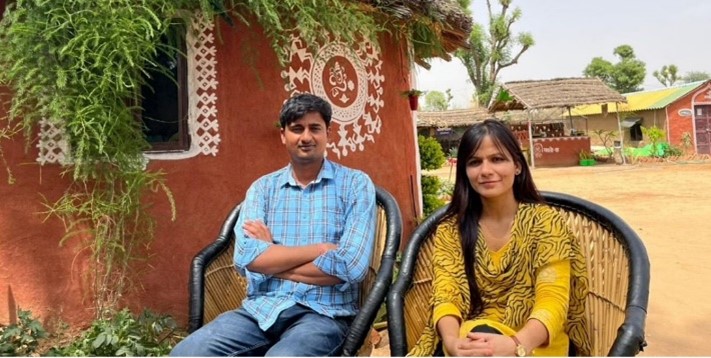
About the Foundation
- Indra Raj Jat and Seema Saini of Jaipur, Rajasthan, began their enterprise by applying integrated agriculture and agro-tourism after finishing their studies.
- They began sustainable farming as well as animal husbandry on a rented piece of land. The farm also promotes agro-tourism and hosts guests in mud homes inspired by traditional Rajasthani villages.
- They have trained thousands of farmers in organic and integrated farming, as well as encouraging them to engage in agro-tourism.
- They have assisted farmers by training them to adopt sustainable agricultural methods such as organic farming, integrated farming, and agro-tourism.
Quote: “With wrong farming methods, we turn fertile land into desert. Unless we go back to organic farming and save the soil, there is no future.”-Jaggi Vasudev
Source:
Share the article
Get Latest Updates on Offers, Event dates, and free Mentorship sessions.

Get in touch with our Expert Academic Counsellors 👋
FAQs
UPSC Daily Current Affairs focuses on learning current events on a daily basis. An aspirant needs to study regular and updated information about current events, news, and relevant topics that are important for UPSC aspirants. It covers national and international affairs, government policies, socio-economic issues, science and technology advancements, and more.
UPSC Daily Current Affairs provides aspirants with a concise and comprehensive overview of the latest happenings and developments across various fields. It helps aspirants stay updated with current affairs and provides them with valuable insights and analysis, which are essential for answering questions in the UPSC examinations. It enhances their knowledge, analytical skills, and ability to connect current affairs with the UPSC syllabus.
UPSC Daily Current Affairs covers a wide range of topics, including politics, economics, science and technology, environment, social issues, governance, international relations, and more. It offers news summaries, in-depth analyses, editorials, opinion pieces, and relevant study materials. It also provides practice questions and quizzes to help aspirants test their understanding of current affairs.
Edukemy's UPSC Daily Current Affairs can be accessed through:
- UPSC Daily Current Affairs can be accessed through Current Affairs tab at the top of the Main Page of Edukemy.
- Edukemy Mobile app: The Daily Current Affairs can also be access through Edukemy Mobile App.
- Social media: Follow Edukemy’s official social media accounts or pages that provide UPSC Daily Current Affairs updates, including Facebook, Twitter, or Telegram channels.






